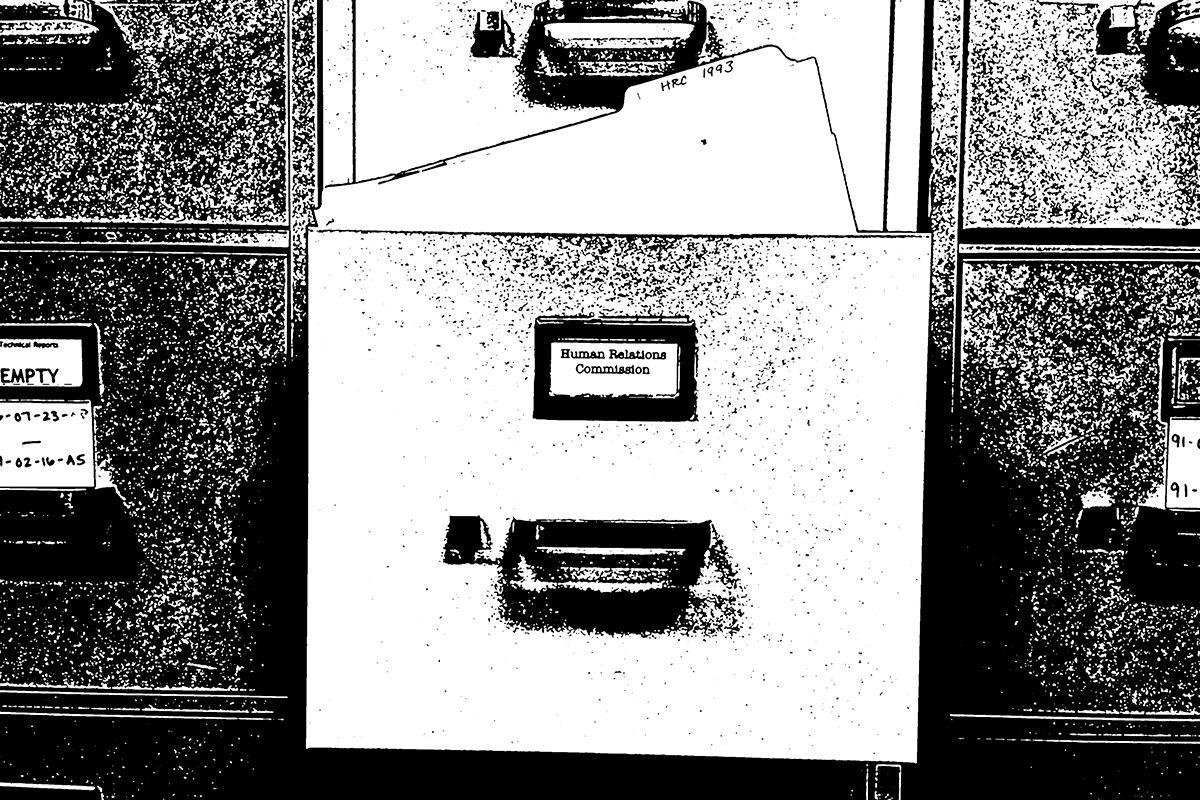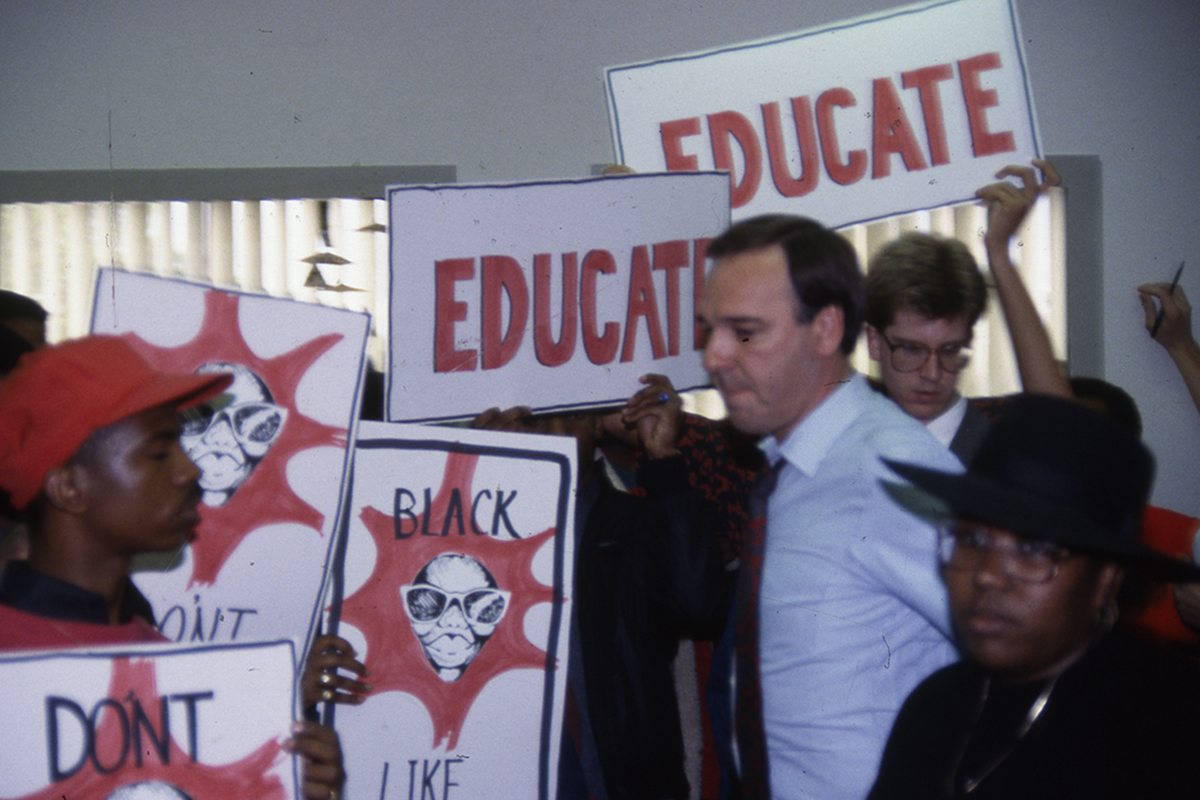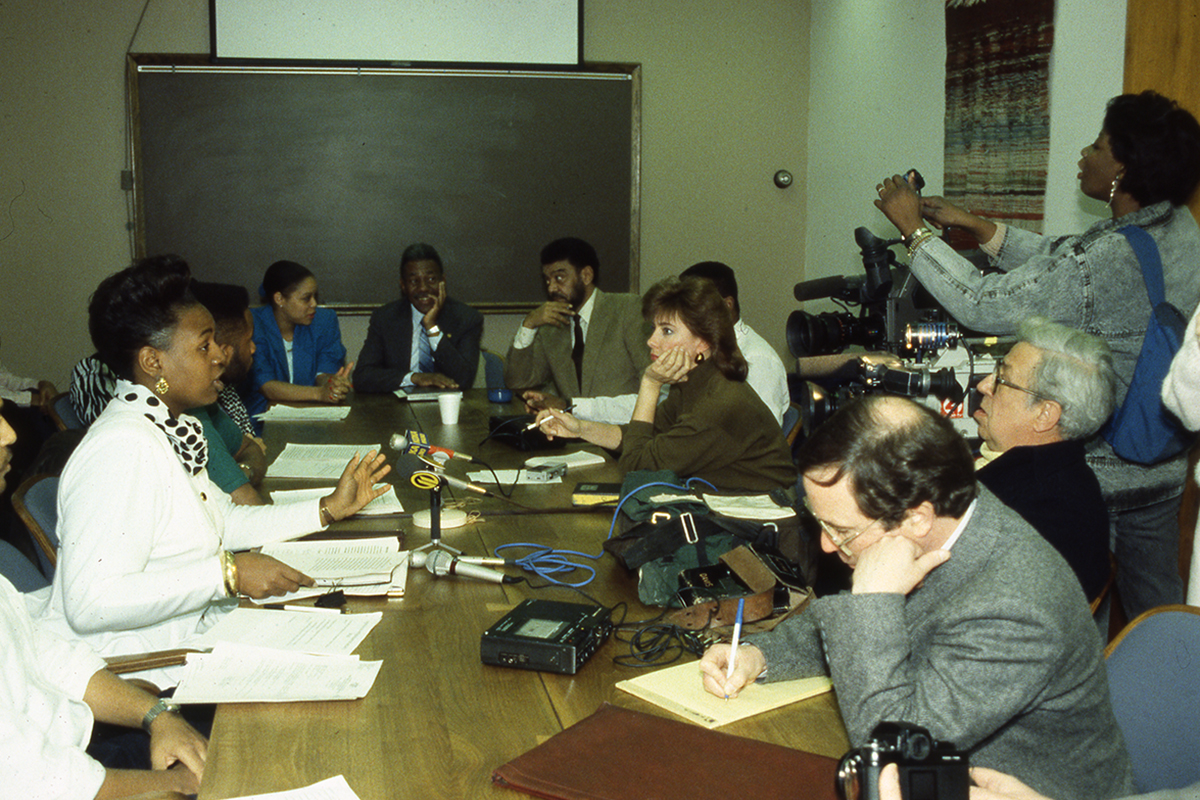Records of the Human Relations Commission

by Communications Coordinator Sarah Bender and Collections Archivist Emily Davis
The Carnegie Mellon University Archives is home to more than 100 years of CMU history — but it doesn’t tell the full story of the university. Founded in 1988, the Archives is relatively new compared to other academic archives at similar institutions, and is still missing documentation of various student groups and campus initiatives. In addition, traditional collecting methods have led to a collection of materials, records, and artifacts that skews predominantly straight, white, and male.
The Libraries’ 2020 exhibition “What We Don’t Have” explored some of the holes in CMU’s history, reflecting on this lack of diversity and strategizing ways to increase representation. Since then, archivists have worked to fill in the gaps, processing existing collections that are currently unorganized, undescribed, and largely unavailable to researchers, and reaching out to groups across campus to acquire additional records.
In this new series, we investigate specific documents that the Archives is looking to add to its collections to better tell the complete story of CMU. Read on to learn more about the records of the Human Relations Commission and how they fit into the larger picture.


Where It All Began
On October 6, 1988, 37 Black students walked into the office of Associate Dean of Student Affairs Lois Cox, carrying signs and demanding change. The Student Affairs office had recently published a calendar featuring a Sambo caricature, and students were mad. Following the demonstration, students met with administrators and faculty several times throughout the 1988-1989 school year to discuss racist incidents that had taken place on campus. They pointed to several additional examples of “racial insensitivity” as the impetus for these meetings, citing statements made on WRCT, words painted on the Fence, a buggy decorated with a confederate flag, and several instances where Black students were stopped on campus by CMU police and unnecessarily taken to security headquarters.
Students presented the administration with a list of demands that included changes to the Dietrich College of Humanities and Social Sciences curriculum (such as the inclusion of more Black history courses), the creation of an ethnic book section in Hunt Library, the development of a required course on ethnic diversity for first-year students, and the recruitment of more Black faculty.
Students continued to meet with various stakeholders in Dietrich College, Hunt Library, and campus security. Then, in April 1989, Richard Cyert, the university president, released three documents: an update on accomplishments, a report on racial profiling by campus security, and a report entitled “Striving for Mutual Respect in the Pluralist Society at Carnegie Mellon University.” In the latter, Cyert announced the creation of a Human Relations Commission (HRC), a committee including students, staff, faculty, and members of the administration that would “act as an oversight committee and will recommend programs for enhancing mutual respect on the campus.”
What Is It
Between 1989 and 2000, the HRC investigated controversies on campus and produced a number of high-profile reports and recommendations on topics such as sexual harassment, racial discrimination, homophobia, and “Don’t Ask, Don’t Tell” in the ROTC. Additionally, the HRC helped draft the university’s 1989 Non-Discrimination Statement, which included language about sexual orientation for the first time.

It's unclear when the HRC dissolved. The last reference to the HRC’s work is in the Focus Faculty and Staff Newspaper and the Tartan in 2000 when the HRC published the report “A Report on the Issue of Health Benefits for Same-Sex Domestic Partners.”
The University Archives has been looking for records related to the HRC for several years. Recently, the inaugural issue of Human Relations Communications, the campus newsletter for the HRC, was found in an unprocessed collection. Additionally, correspondence between the HRC and members of cmuOUT, a student organization, was donated to the University Archives in 2022. While these items shed some light on the commission and its activities, they also highlight how crucial it is to locate additional materials.
The University Archives is looking for:
- Meeting minutes from the HRC meetings
- Newsletters
- Reports issued by the HRC
- Memos & Correspondence
The HRC investigated many sensitive issues, and some HRC records may contain confidential information. This may be why the HRC records have never made their way to the University Archives. While the University Archives is accustomed to balancing access and privacy and has workflows to redact and anonymize materials, archivists acknowledge that this body of records might need special attention. The Archives plans to work in collaboration with the CMU community to ensure the HRC records receive extra consideration before being made publicly accessible.

Why It Matters
While the HRC might not have had any authority to make direct changes to university policy, based on what we know, the commission and its members played a role in confronting challenging topics like racism and homophobia on campus and shaping university policy. The work of the commission ultimately made the campus more inclusive for everyone. As CMU continues to work to create a more diverse, inclusive, and equitable community, meeting minutes, newsletters, and reports from the HRC can shed light on how we faced these challenges in the past and brought about meaningful change. Without them, voices are missing from CMU’s story.
So, Where Are the Records?
While the two chairmen of the HRC, Elliott, and Toby Davis, retired many years ago (Elliott passed in 2019, and Davis passed in 2006), the University Archives suspects that copies of the newsletters, meeting minutes, and reports might be in the back of an old filing cabinet somewhere on campus.
“We often hear from people on campus when they are moving offices, retiring, or in the mood to clean out the old filing cabinets in their department,” Collections Archivist Emily Davis said. “We are always happy to come and look at miscellaneous records if people think they might be important. We’re a small team. We rely on the campus community to direct records our way. What might look like a useless file folder of old stuff might be something we would love to include in the Archives.”
If you have any records related to HRC or know someone who might possess the documents, please contact the University Archives or stop by open hours on Thursdays from 10 a.m. to 4 p.m. to let us know. You can also reach out directly to Collections Archivist Emily Davis or Community Collections Processing Archivist Crystal Johnson.
